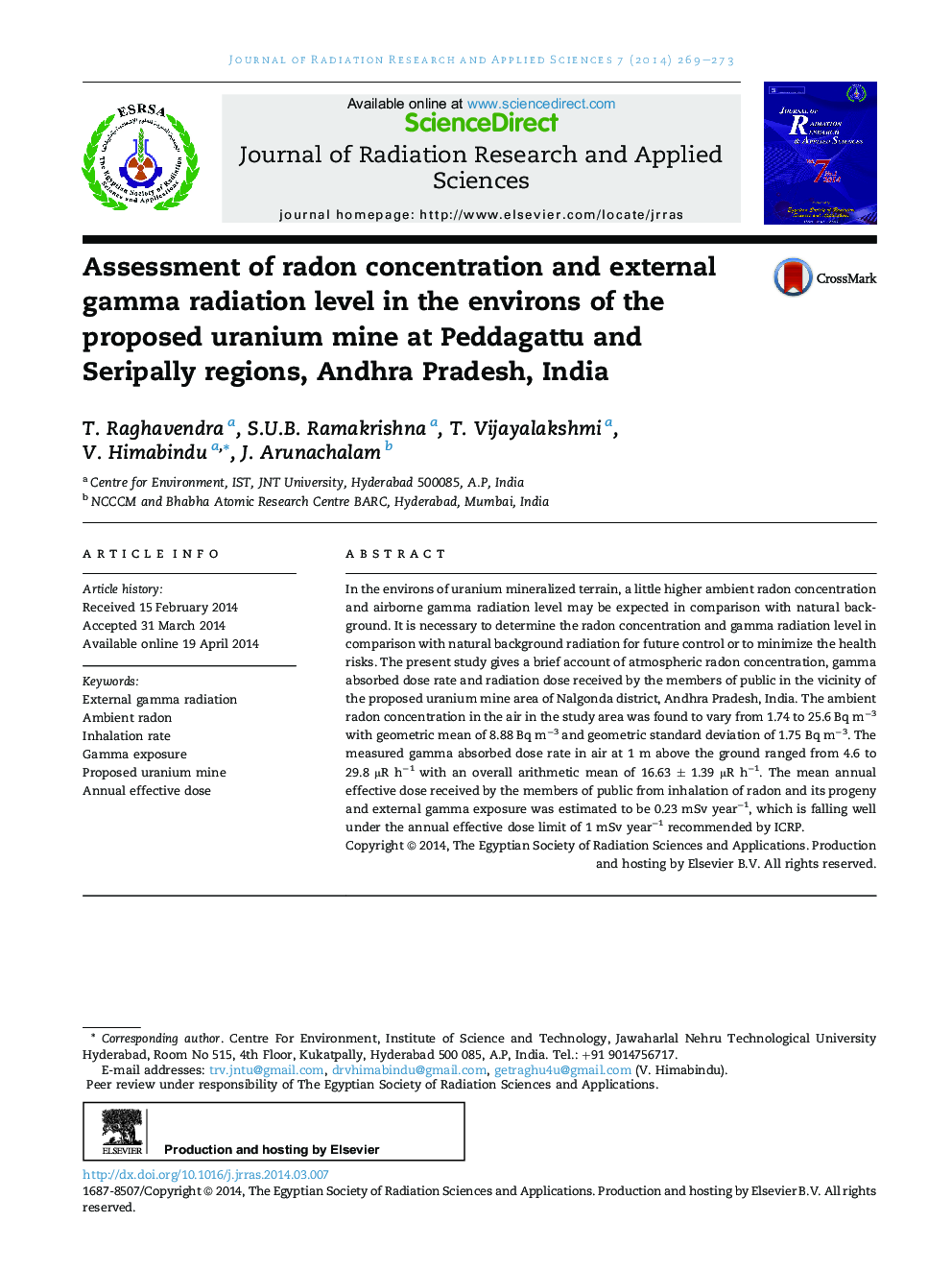| Article ID | Journal | Published Year | Pages | File Type |
|---|---|---|---|---|
| 1570483 | Journal of Radiation Research and Applied Sciences | 2014 | 5 Pages |
In the environs of uranium mineralized terrain, a little higher ambient radon concentration and airborne gamma radiation level may be expected in comparison with natural background. It is necessary to determine the radon concentration and gamma radiation level in comparison with natural background radiation for future control or to minimize the health risks. The present study gives a brief account of atmospheric radon concentration, gamma absorbed dose rate and radiation dose received by the members of public in the vicinity of the proposed uranium mine area of Nalgonda district, Andhra Pradesh, India. The ambient radon concentration in the air in the study area was found to vary from 1.74 to 25.6 Bq m−3 with geometric mean of 8.88 Bq m−3 and geometric standard deviation of 1.75 Bq m−3. The measured gamma absorbed dose rate in air at 1 m above the ground ranged from 4.6 to 29.8 μR h−1 with an overall arithmetic mean of 16.63 ± 1.39 μR h−1. The mean annual effective dose received by the members of public from inhalation of radon and its progeny and external gamma exposure was estimated to be 0.23 mSv year−1, which is falling well under the annual effective dose limit of 1 mSv year−1 recommended by ICRP.
